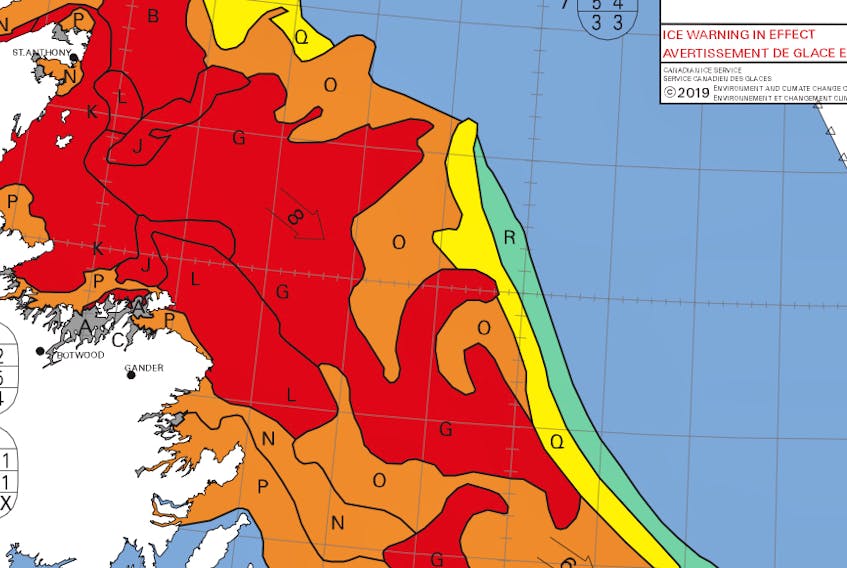GANDER, N.L. — When it comes to the sea, two things harvesters are always cognizant of are wind and ice conditions.
And regardless of government issued start dates, come spring, they are the decision makers for when the fishing season truly gets underway.
Ice charts, dated March 5, show heavy ice has packed tightly around the northeast coast of Newfoundland.
Based in Triton, inshore fisherman Michael Roberts said there’s some wiggle room around the bays and coves, but all it takes is a northerly wind to jam up the shoreline.
“Usually when there’s heavy ice like this, it means a later season for us, because it still has to come south,” said Roberts.
Fogo Island fisherman Jerry Best has been tracking icing conditions as well.
While there’s a lot of ice in Notre Dame Bay - so much that an ice breaker has to assist the Fogo Island-Change Islands ferry for one run per day - Best said it’s hard to determine what it will mean for fishing.
He noted it’s the heaviest ice he’s seen around the island for the last five or six years, but, like Roberts, Simms said it all depends on the wind.
“You get the right wind in April it can disappear pretty quick, but if you get northerly winds it could be around for a long time,” he said. “I know one year, back in the ‘90s, we didn’t get fishing until July because of the ice.”
It’s something the Canadian Coast Guard monitors on a regular basis.
While the northeast coast is cinched, Brad Durnford, superintendent of ice breaking operations for the Coast Guard’s Atlantic region, said it’s on par with the 30-year average.
The bulk of the concentration, he said, lies between St. Anthony and Cape Freels, with charts showing nine-tenths coverage, meaning very little open water.
Ice thickness ranges from six inches to six feet.
“We are looking at multiyear heavy ice showing 60 miles north of Bell Isle, up around Black Tickle, that’s the heavy stuff, if that comes all the way down south it will get a little worse due to the size of the ice,” he said.
Durnford said the coast guard isn’t in a position to predict how ice conditions will play out throughout the spring, but he did note temperature outlooks are expected to remain low and traditionally a “spurt” of northerly wind is experienced in the spring.
If it plays out that way, it could hamper harvesters when fishing resumes.
“The potential is there… you can never say those things with certainty, it’s just that the conditions are set up right for it to happen,” Durnford said.
“It depends on what the winds do. If it’s southwest it’ll push off the ice off and it will stay off. If it comes northeast, northerly, we’ll be dealing with this for quite some time.”









